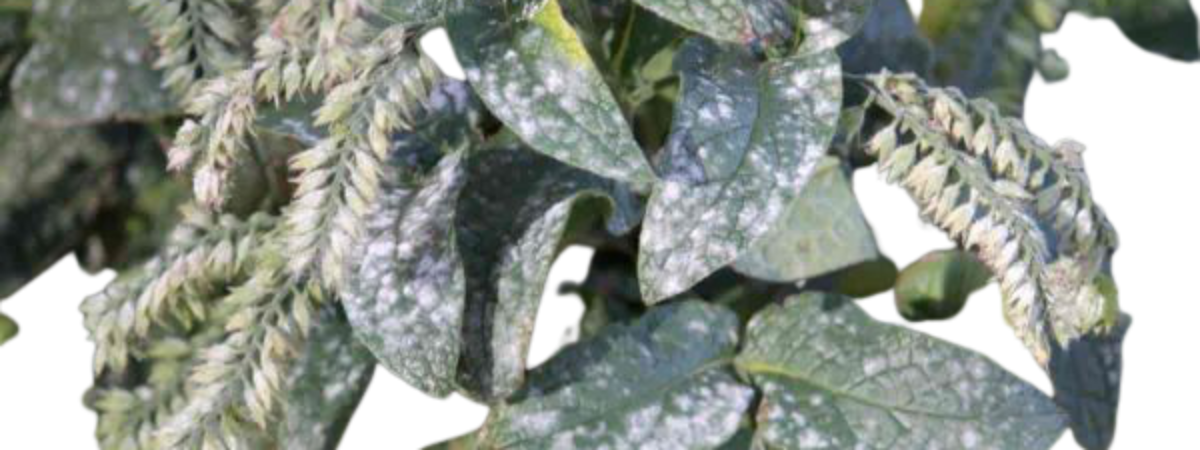What is powdery mildew?
Powdery mildew, as the name suggests, is a white or grey powdery substance that appears on leaves in the form of a fungal disease. These are caused due to lack of sunlight, low moisture, dry climate, and poor air circulation.
They not only thrive on the leaves but also on flowers, stems, vegetables, fruits, or underneath of the leaves.
Powdery mildew usually attacks the young leaves leaving them yellow and weak. The mature leaves are usually unaffected. Click To TweetPowdery mildew usually attacks the young leaves leaving them yellow and weak. The mature leaves are usually unaffected.
Although the mildew is rarely fatal, if left unchecked, it can spread from one plant to another by the way of winds, water, or birds.
They rob the plants of essential nutrients and moisture which results in turning the green leaves yellow or distorted, making them weak and depriving them of their quality. The fruits and flowers bloom less and their quantity decreases.
The most affected plant varieties of this fungal disease are beans, cucumbers, zucchini, peas, pumpkins, squash, melons, roses, tomatoes, blueberries, and zinnia. The spores of the fungus are very easily transferred in such plants by winds, insects, or water.
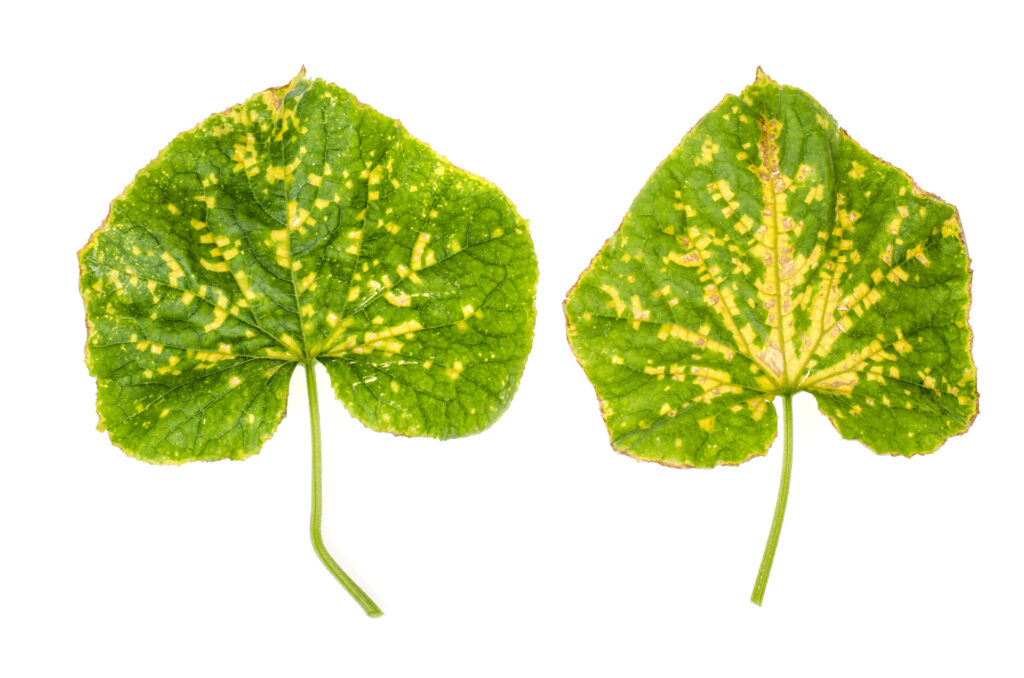
Spread of Powdery Mildew:
As against other fungal infections, powdery mildew flourishes the most in dry climates with warm weather with temperature between 60-80°F / 15-27°C and need an excessive amount of humidity near the plants to grow and spread.
It is usually observed that they are less distributed in rainy or cold areas since the temperature there is usually around 90°F (32°C).
This is because rains restrict the spread of the mildew by wind and the cold temperature does not allow the drift of the mildew into the garden.
But in cases where there have previously been issues of powdery mildew, the old succulents and plants may observe a fresh outbreak of mildew from dormant spores.
How to identify Powdery Mildew?
Identifying powdery mildew is quite easy because it looks the way it sounds. Since they are white powdery substances or spots, they can be identified on plants if they appear as if they have been dusted with white powder or flour.
They generally spear as white spots on leaves, stems, flowers, or fruits and wrap the upper part of the leaves. In case of a high amount of mildew, the underneath of the leaves can also get affected.
When the young leaves turn yellow or dry out too quickly, it is mostly because of this fungus. It may also be the reason for damage or breakage of the stems or leaves of the plant.
The growing buds and tips may also not grow more and become distorted due to the fungus. All of these effects are visible in the late growing season of the plants.
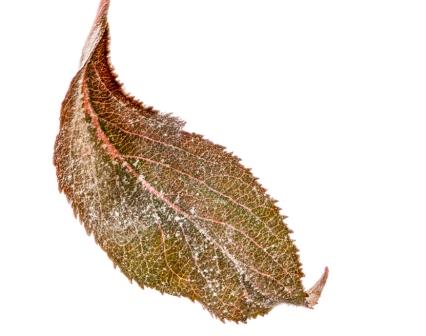
How to treat Powdery Mildew?
Several mixtures can be used to treat powdery mildew. Some of them are:
- Potassium Bicarbonate Mixture: Combining half a teaspoon of liquid soap, one tablespoon of potassium bicarbonate and one gallon of water will create a mixture that can be sprayed to areas affected by the fungus. This is one of the best mixtures used for the treatment of powdery mildew.
- Baking Soda Mixture: Combining half a teaspoon of liquid soap, one tablespoon of baking soda, and one gallon of water and creating a mixture to spray on the affected areas above and underneath the leaves can prevent and also treat existing powdery mildew to a great extent.
- Neem Oil: Neem Oil can be added to the above mixtures to improve their performance on the fungus.
- Milk: Combining one part of the milk with two or three parts of water can also create a mixture that can be sprayed on the affected areas of the plant. This mixture is most suitable for plants like melon, zucchini, and cucumbers as the composition of milk also enhances the immune system of the plants along with treating them of the fungus.
- Organic fungicides which contain sulfur are also great for preventing and treatment of powdery mildew.
Apart from these mixtures, trimming and pruning also helps in treating powdery mildew. Cutting off the affected stems, buds or leaves can restrict the spread of the fungus.
Other ways for the treatment of this fungus can be finding the cure in the root cause. Planting the cultivars in sunlit areas where air circulation is abundant, can resist the growth of powdery mildew.
Using organic compost or mulch in huge quantities to shield the soil after cleaning can also be a useful trick. It is also a good idea to water the plants in the morning so that they get time to dry up during the daytime to avoid the formation of new spores.
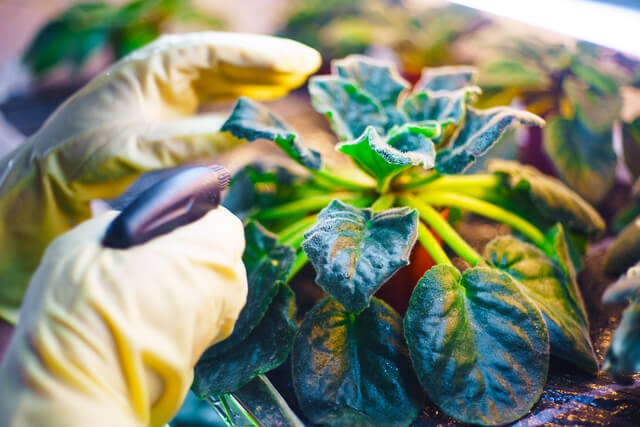
Prevention of Powdery Mildew
Prevention is always better than cure.
Prevention of powdery mildew can be done from the very beginning by following basic rules like planting in a sunny and sheltered area that provides abundant sunlight and also protects from harsh winds.
It is also a good idea to choose plants for our garden that are fungus resistant and require less care in concern to fungal infections.
Trimming and pruning regularly can also prevent powdery mildew to a great extent and also enhance air circulation around the plants which also reduces humidity.
It is also important to disinfect the pruning tools after pruning the diseases or affected leaves or stems
The plants should be sowed at an adequate distance from each other to avoid spreading through wind or water easily. Proper distancing also increases the airflow between the plants.
It is important to keep in mind that the young leaves and stems are the most prone to fungal infections and thus overuse of fertilizers should be avoided at all costs.
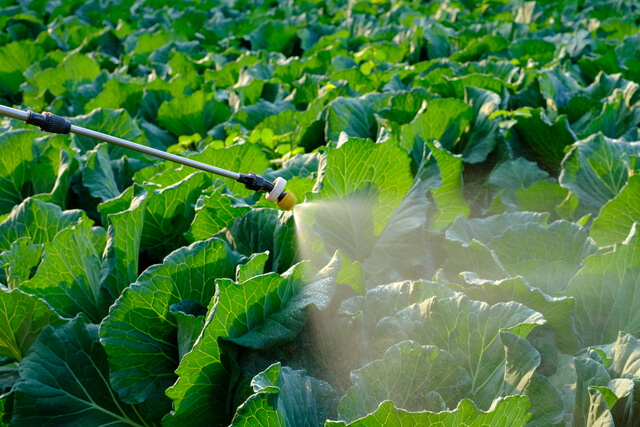
Controlling Powdery Mildew:
Controlling the fungus at an early stage is the best way of preventing the spread of mildew. But if the plants are already infected at a huge scale, it is nearly impossible to treat the fungus and get rid of it completely.
In such a case, it is important to focus on controlling the spread of the existing fungus to other plants by cutting off the infected stems, leaves, fruits, and buds and demolishing them through burning or throwing them away in the trash.
Composting them is not considered a good idea since the fungus can spread through the composted materials to the fresh plants.
Sterilizing the pruning tools with rubbing alcohol is a critical step so that the tools that contained infected particles are not used to trim the fresh and uninfected parts of the plant.
Household items like milk, neem oil, and baking soda can be used to prepare different kinds of solutions to control the spread of powdery mildew. Spraying these solutions thoroughly on the affected areas of the plants can restrict the growth of powdery mildew to a great extent.
Organic fungicides like sulfur, potassium bicarbonate, and lime-sulfur are also very useful in controlling the fungus.
It is advisable to consult the local nurseries to understand the amount and frequency of usage of fungicides on the plants based on their type.
Conclusion
Powdery Mildew although appears to be very non-fatal, can cause great damage to the plants like a slow poison. So, it is always good to keep a check on the plants and make sure they grow healthy and nourish properly.
You may also like to read
How to get rid of Mealybugs on your plants – 5 best ways to eliminate mealybugs

